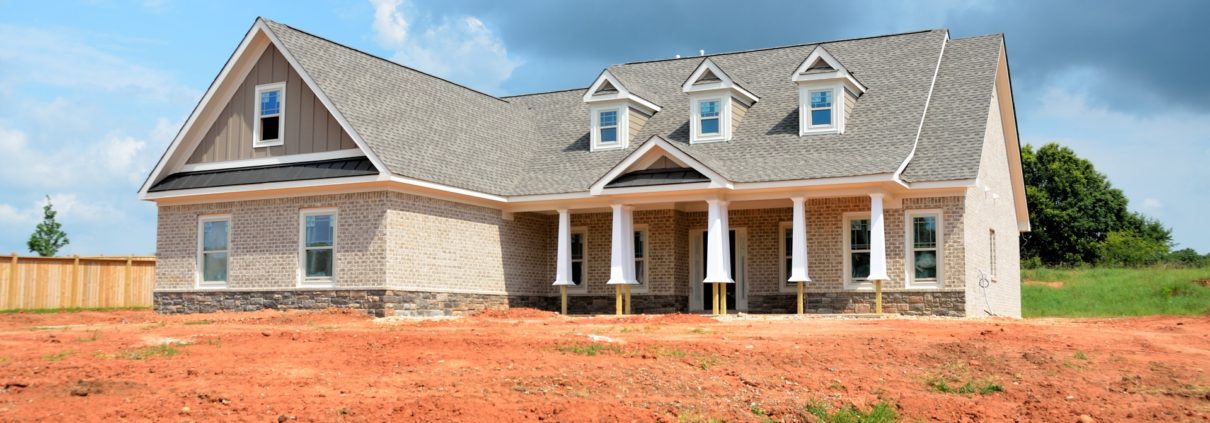Make Your Own Luck as a Land Real Estate Professional
With the Kentucky Derby right around the corner, horse lovers are breaking out their four- leaved clovers and horseshoes in the hopes of placing their bets on the winning horse. In the land industry, it’s not uncommon for people to think luck is out of their hands. However, your odds at succeeding in the land industry are much higher than betting on this year’s winning horse. Here’s how you can make your own luck in the land industry.
1. Be Social To Increase Your Odds of Success.
It’s easy to get stuck in a rut when you work in the land industry. The industry is so big that it can be easy to settle into a routine where you talk to the same group of people all the time. This can backfire for people trying to find new clients. If you are looking to expand your business, try going to networking events like NLC or meeting people in different areas of land expertise. The more people you talk to, the more likely your chances of meeting your next big client. Make statistics work for you!
2. Nip Problems In The Bud
The earlier you can address and fix any issues surrounding a property, the more likely it is you are going to have a successful sale. Instead of thinking “We’ll fix it when we get there,” or hoping that the worst case scenario doesn’t happen, address the problem (or possible problem) as soon as you know it could hurt the sale.
For example, is the title to a property so complicated that you’d need a team of lawyers just to understand it? Contact an agency as soon as you can. Suspect there are some environmental hazards on a seemingly perfect property? Instead of crossing your fingers, get an environmental assessment of your land. Yes, it will cost you a little extra money up front, but the long-term cost of not fixing issues with properties is usually much greater.
Being proactive about potential problems also shows clients how dedicated you are to getting them the best possible land and shows your expertise since you’ve considered all possible outcomes.
3. Find Luck In The News
Trying to stay up to date with land news can seem harder than selling land. From land laws changing almost every day to fluctuating land values, it can be overwhelming to keep track of it all.
While it is easy to get lost in clickbait-y articles, staying on top of land news is the key to making your own luck. Land news and trends offer insight into what can make you money and what won’t. Following the news is especially important before planting season. Knowing the current and predicted future value of crops is the best way to maximize profits. Following land news is also very important for those who are selling or buying land. The values of different land types vary wildly week by week, so by staying on top of the market, you’ll be able to get the best possible price for your land. Plus, having all that information only ads to your image as the local land expert in your market.
A great way to learn about land news and trends is to follow land experts on social media. At RLI, we dig through hundreds of land news articles to bring you the information you need to know. Here are some great accounts to follow:
- REALTORS® Land Institute (of course!) (@RLILand).
- LANDTHINK (@LANDTHINK)
- Mossy Oak (@MossyOak)
- National Land Realty (@ThisIsYourLand)
- com (@LANDMagazines)
- Whitetail Properties (@WhitetailPropTV)
- United Country Real Estate (@UCRealEstate)
- KW Commercial (@KW_Commercial)
- The Land Report (@landreport)
4. Expand Your Area of Expertise.
The more you know, the more you have to offer potential clients. Having multiple areas of expertise can increase your chances of landing your next big client. One great way of expanding your area of expertise is by taking courses through RLI’s LANDU Education Program. Here are some examples of upcoming classes and webinars:
–Negotiating Oil and Gas Leases (June 13)
–Google Earth Mapping for Real Estate (June 25)
–Gaining Community Support for Land Use Projects (May 16th)
–Land Investment Analysis (September 4th)
Taught by land experts, these classes are designed to help you expand your knowledge to attract more clients. You’ll also have access to a large network of other land experts who you can learn from, including fellow students and the instructors.
While there some factors that are out of your control, being lucky in the land industry is largely in your own hands. Proactive problem solving, learning new things, and keeping up to date with land news are all your secret weapons to creating your own luck. And don’t forget to check out all the great member benefits and resources RLI has to offer its members.
 About the author: Laura Barker is a Marketing Assistant Intern for the REALTORS® Land Institute. She graduated from Clark University in May 2017 and has been with RLI since October 2017.
About the author: Laura Barker is a Marketing Assistant Intern for the REALTORS® Land Institute. She graduated from Clark University in May 2017 and has been with RLI since October 2017.




 At that time, my thoughts were that the entire regulatory morass was put on the landowner to the community’s benefit. Alas, to this day, I still feel the same. New homes were being built for fifty dollars per square foot, the lot included. A finished two-thousand square foot colonial was one hundred thousand dollars, or thereabouts. During the early 1980s, we had an escalating economy and prices on homes and land were rising dramatically. The state of Massachusetts started buying the developmental rights to family farms and paying them not to build, but to continue to farm. In Northborough, two of the biggest farms on the highest point in town, overlooking the new 1974 I-290 highway, were bought. Over five-hundred acres were kept from development and, until this day, serve as a reminder of why some regulations are necessary.
At that time, my thoughts were that the entire regulatory morass was put on the landowner to the community’s benefit. Alas, to this day, I still feel the same. New homes were being built for fifty dollars per square foot, the lot included. A finished two-thousand square foot colonial was one hundred thousand dollars, or thereabouts. During the early 1980s, we had an escalating economy and prices on homes and land were rising dramatically. The state of Massachusetts started buying the developmental rights to family farms and paying them not to build, but to continue to farm. In Northborough, two of the biggest farms on the highest point in town, overlooking the new 1974 I-290 highway, were bought. Over five-hundred acres were kept from development and, until this day, serve as a reminder of why some regulations are necessary. In addition, for the last ten years, builders have taken advantage of a law in Massachusetts called Chapter 40B. This law was created in 1969 to increase affordable housing throughout the Commonwealth. However, it did not get any traction until 2005 or so. This law allowed for an increased maximum density for apartments, as long as twenty-five percent of the units were for people who meet the affordable income limits as defined by the State of Massachusetts. Thousands and thousands of apartments have sprinkled the highways and byways, as this law allows you to bypass local planning boards and apply directly to the State.
In addition, for the last ten years, builders have taken advantage of a law in Massachusetts called Chapter 40B. This law was created in 1969 to increase affordable housing throughout the Commonwealth. However, it did not get any traction until 2005 or so. This law allowed for an increased maximum density for apartments, as long as twenty-five percent of the units were for people who meet the affordable income limits as defined by the State of Massachusetts. Thousands and thousands of apartments have sprinkled the highways and byways, as this law allows you to bypass local planning boards and apply directly to the State. About the author:
About the author: